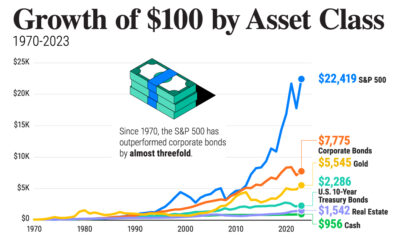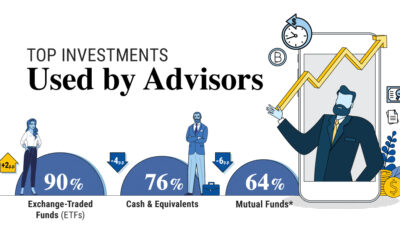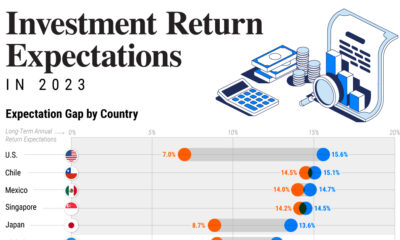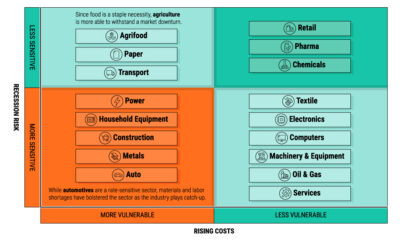This infographic is available as a poster.
Which Asset Classes Hedge Against Inflation?
U.S. inflation has climbed 5% over the last year, the largest 12-month increase since August 2008. With this in mind, many investors may be wondering how to position their portfolio to hedge against inflation.
In this Markets in a Minute chart from New York Life Investments, we show which asset classes have beat inflation in recent years.
Real Returns by Asset Class
To see which asset classes have helped hedge against short-term inflation, we calculated annual real returns—returns net of inflation—for various types of investments. A return above zero means that the asset class beat inflation, while a return below zero means that the asset class did not keep up with inflation.
Here are minimum, median, and maximum annual real returns for various asset classes from 2012-2020.
| Minimum | Median | Maximum |
| Global equities | -11.6 | 15.4 | 24.5 |
| U.S. large cap equities | -6.3 | 14.3 | 30.9 |
| Listed infrastructure equities | -8.8 | 12.3 | 23.8 |
| Real estate investment trusts (REITs) | -7.3 | 7.2 | 26.4 |
| Gold | -28.8 | 6.0 | 23.2 |
| U.S. treasury inflation protected securities (TIPS) | -10.1 | 2.6 | 9.6 |
| Foreign bonds | -9.6 | 1.8 | 14.1 |
| Floating rate bonds | -0.4 | 0.0 | 2.2 |
| Global commodities | -33.9 | -2.7 | 15.3 |
| Energy equities | -38.0 | -11.5 | 36.7 |
Global equities had the highest median real return in recent years, followed by U.S. large cap equities and listed infrastructure equities.
Gold beat inflation about half the time, though in its worst year (2013) it was almost 30% below inflation. At that time, the U.S. Federal Reserve announced it would end quantitative easing measures, which decreased the perceived need for gold as a hedge.
Global commodities and energy equities had the only negative median real returns of the group. However, energy equities also had the highest maximum return over the last decade, and proved to be the most volatile asset class of the group.
Hedging During High Inflation
Of course, there are some limitations to this data. U.S. annual inflation has been relatively low in recent years, averaging under the Federal Reserve’s 2% target.
Asset classes may respond differently during periods of high inflation. For example, equities have shown their highest real returns when inflation is between 2% to 3%. However, returns may become more volatile when inflation is high, because it can increase costs and reduce earnings.
On the flip side, some asset classes perform better during periods of high inflation. While commodities had a negative median real return in recent years, they performed well during three historical periods of high inflation.
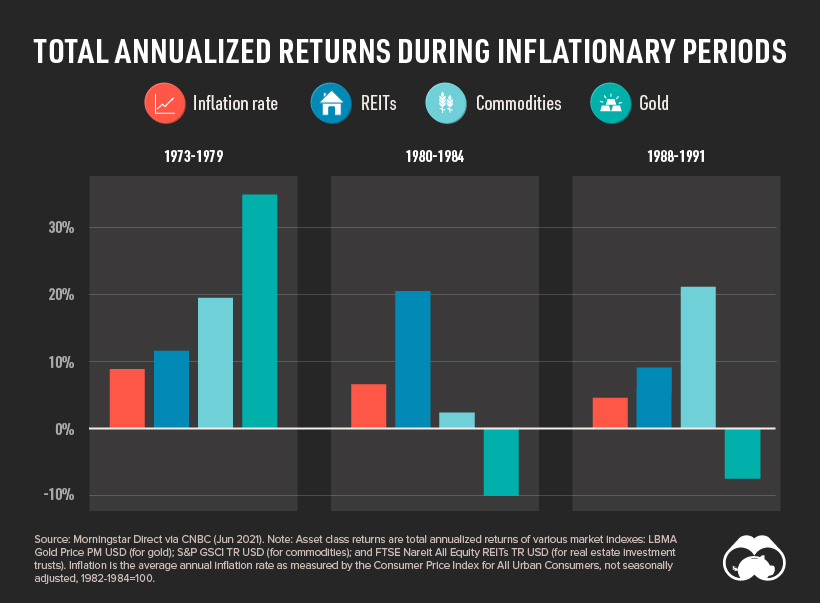
When annual inflation averaged about 4.6% from 1988-1991, commodities had a total annualized return of over 20%. Total annualized returns show what an investor would have earned over a given time period if returns were compounded. Gold has had a more mixed track record during high inflation, though it had a whopping annualized return of 35% from 1973-1979.
The ability for an asset class to hedge against inflation can also depend on the timeframe. For example, over the long-term, gold has seen strong inflation-adjusted returns.
Time to Take Action?
U.S. Federal Reserve chair Jerome Powell believes rising U.S. inflation is temporary. Prices decreased sharply at the onset of the pandemic, making year-over-year inflation figures look much larger. He also believes supply bottlenecks are temporary as industries have been caught with soaring demand amid a quick reopening. However, some Fed officials say the economy is in unprecedented territory, and it’s hard to know where inflation will go next.
What can investors do? There is no one asset class that has proven to be a silver bullet against inflation historically. Instead, investors may consider diversifying their portfolio with asset classes such as equities, REITs, commodities, and gold. This may help hedge against inflation, whether it stabilizes around 2% or rises to levels not seen for decades.

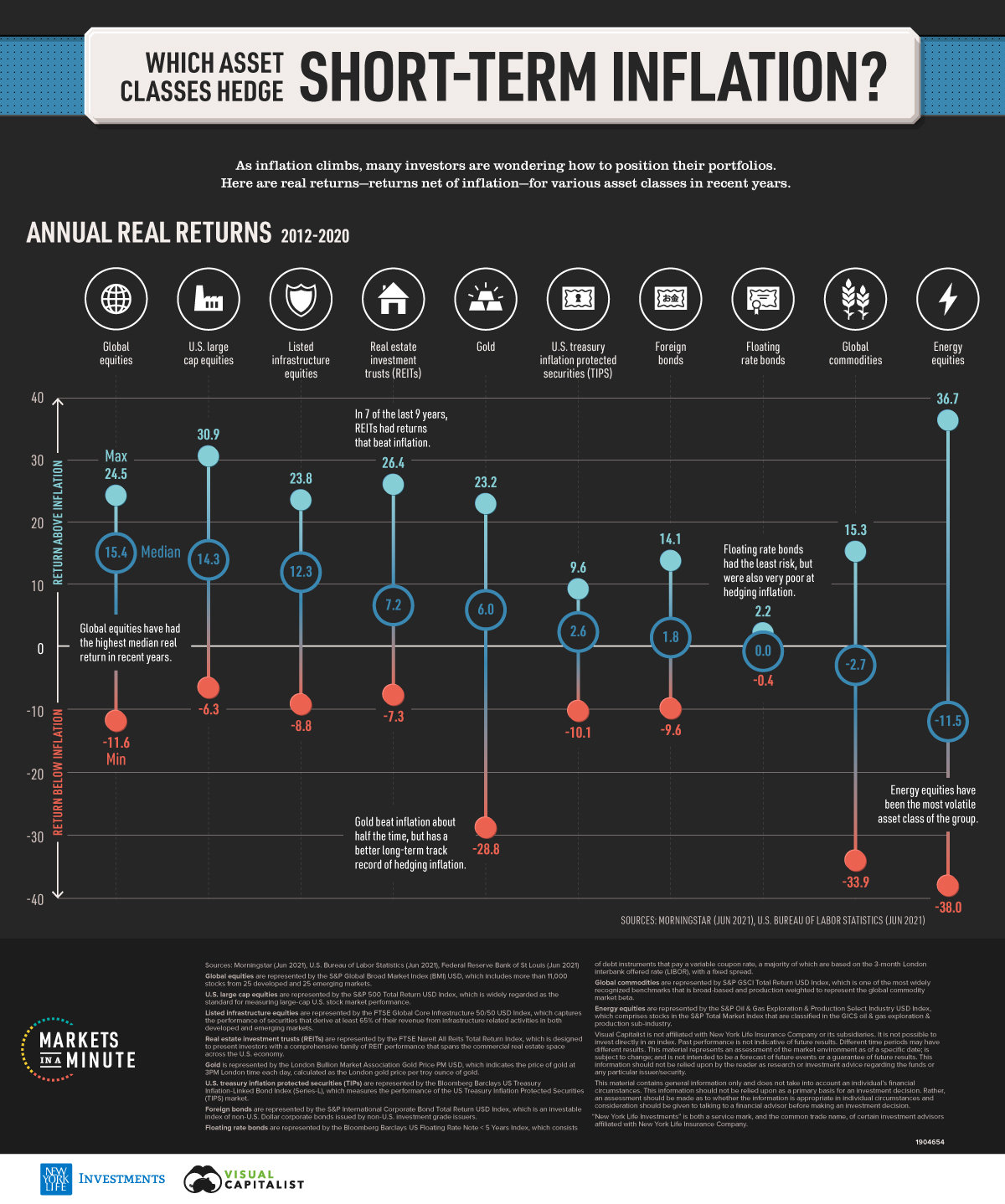
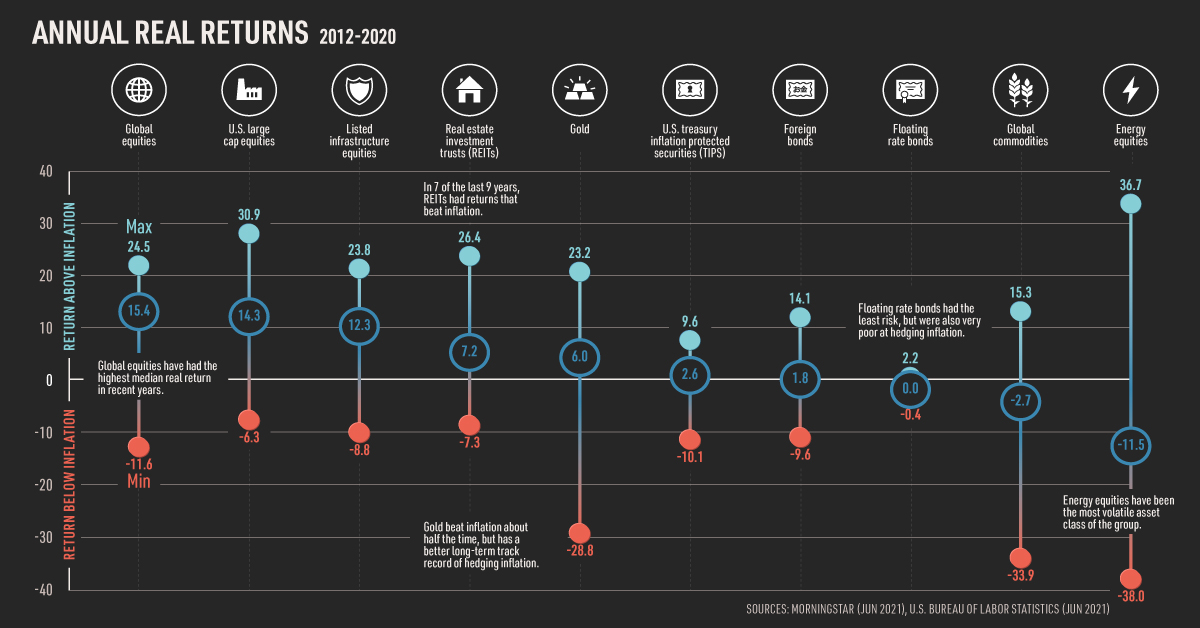

 Infographics2 years ago
Infographics2 years ago
 Markets in a Minute2 years ago
Markets in a Minute2 years ago
 Markets in a Minute2 years ago
Markets in a Minute2 years ago
 Infographics2 years ago
Infographics2 years ago
 Markets in a Minute1 year ago
Markets in a Minute1 year ago
 Markets in a Minute2 years ago
Markets in a Minute2 years ago
 Infographics1 year ago
Infographics1 year ago
 Markets in a Minute2 years ago
Markets in a Minute2 years ago


